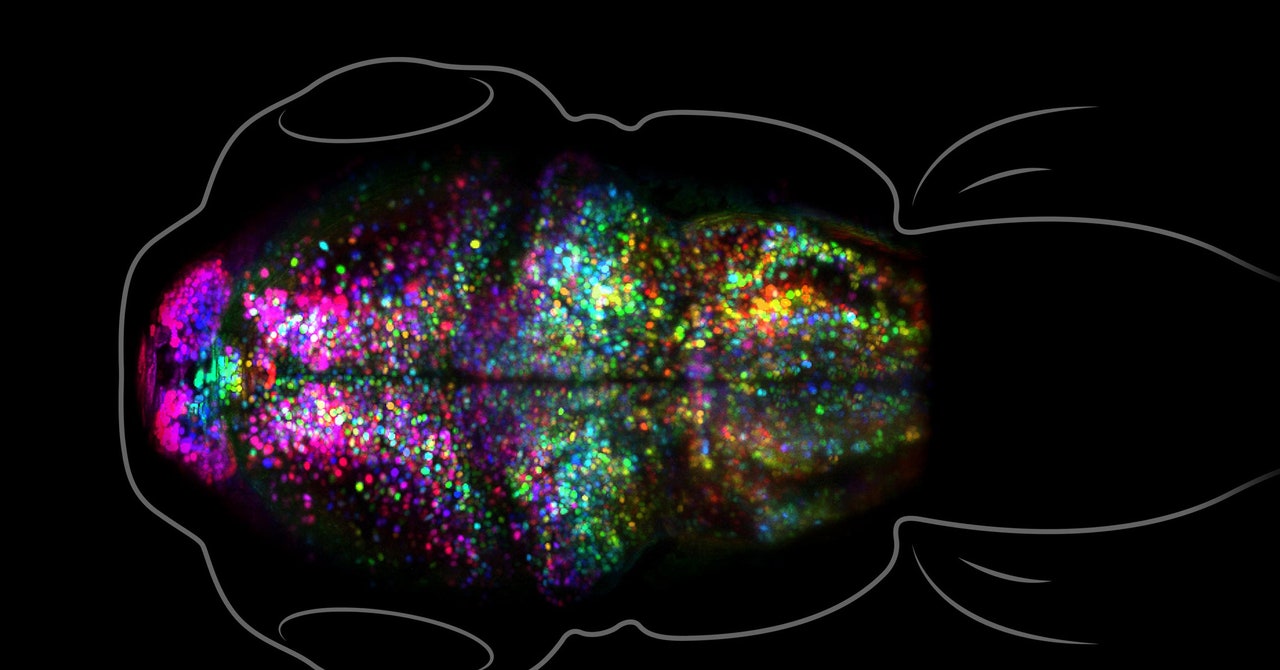
Imagine that while you are enjoying your morning bowl of Cheerios, a spider drops from the ceiling and plops into the milk. Years later, you still can’t get near a bowl of cereal without feeling overcome with disgust.
Researchers have now directly observed what happens inside a brain learning that kind of emotionally charged response. In a new study published in January in the Proceedings of the National Academy of Sciences, a team at the University of Southern California was able to visualize memories forming in the brains of laboratory fish, imaging them under the microscope as they bloomed in beautiful fluorescent greens. From earlier work, they had expected the brain to encode the memory by slightly tweaking its neural architecture. Instead, the researchers were surprised to find a major overhaul in the connections.
What they saw reinforces the view that memory is a complex phenomenon involving a hodgepodge of encoding pathways. But it further suggests that the type of memory may be critical to how the brain chooses to encode it—a conclusion that may hint at why some kinds of deeply conditioned traumatic responses are so persistent, and so hard to unlearn.
“It may be that what we’re looking at is the equivalent of a solid-state drive” in the brain, said coauthor Scott Fraser, a quantitative biologist at USC. While the brain records some types of memories in a volatile, easily erasable form, fear-ridden memories may be stored more robustly, which could help to explain why years later, some people can recall a memory as if reliving it, he said.
Memory has frequently been studied in the cortex, which covers the top of the mammalian brain, and in the hippocampus at the base. But it’s been examined less often in deeper structures such as the amygdala, the brain’s fear regulation center. The amygdala is particularly responsible for associative memories, an important class of emotionally charged memories that link disparate things—like that spider in your cereal. While this type of memory is very common, how it forms is not well understood, partly because it occurs in a relatively inaccessible area of the brain.
Fraser and his colleagues saw an opportunity to get around that anatomical limitation and learn more about associative memory formation by using zebra fish. Fish don’t have an amygdala as mammals do, but they have an analogous region called a pallium where associative memories form. The pallium is much more accessible for study, Fraser explained: While a developing mammalian brain grows by just getting bigger—“inflating like it’s a balloon”—the zebra fish brain almost turns itself inside out “like a popcorn kernel, so those deep centers are up near the surface where we can image them.” What’s more, zebra fish larvae are transparent, so the researchers could peer directly into their brains.
Neuroscientists generally agree that the brain forms memories by modifying its synapses—the tiny junctures where neurons meet. But most believe that it mainly does so by tweaking the strength of the connections, or how strongly one neuron stimulates the next, Fraser said.
So to make that process visible, Fraser and his team genetically engineered zebra fish to produce neurons with a fluorescent protein marker bound to their synapses. The marker protein, created in the lab of Don Arnold, a professor of biological sciences and biological engineering at USC, fluoresced under the dim laser light of a custom microscope. The challenge was “to be able to eavesdrop on something as it takes place,” but use as little light as possible to avoid scorching the creatures, Fraser said. The researchers could then see not only the location of individual synapses but also their strength—the brighter the light, the stronger the connection.


